Learn all about canning orange juice! This beginner-friendly recipe has a quick processing time, and requires just one ingredient: orange juice.
Whether you want to make your own, or purchase some from the grocery stores, you can preserve citrus juice for many months (or even years) using this simple water bath method.
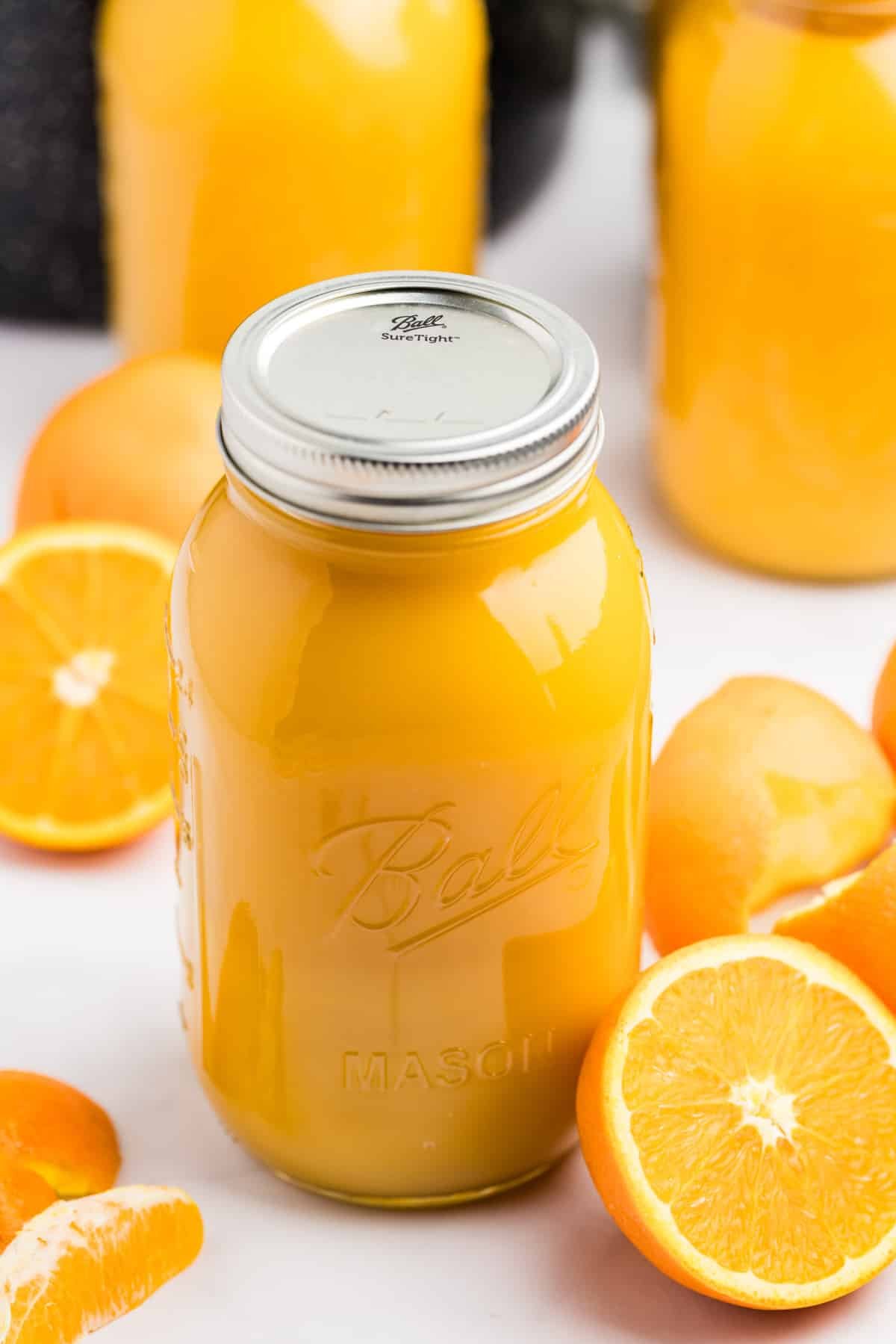
Jump to:
This easy recipe for canning orange juice is a new favorite around here! Whether you have a load of fresh oranges you want to preserve, or scored a great deal on store-bought orange juice, this is the perfect way to preserve it for the months ahead.
Since orange juice is naturally very acidic, it can be processed in a water bath in just 15 minutes, and doesn't require sugar or special ingredients!
If you have your own orange trees, you can make your own orange juice with whole oranges and a good quality juicer. I have to say I'm a little jealous, as all of our oranges in the Northeast are trucked in - so no orange trees for me. Maybe some day!
You Will Need:
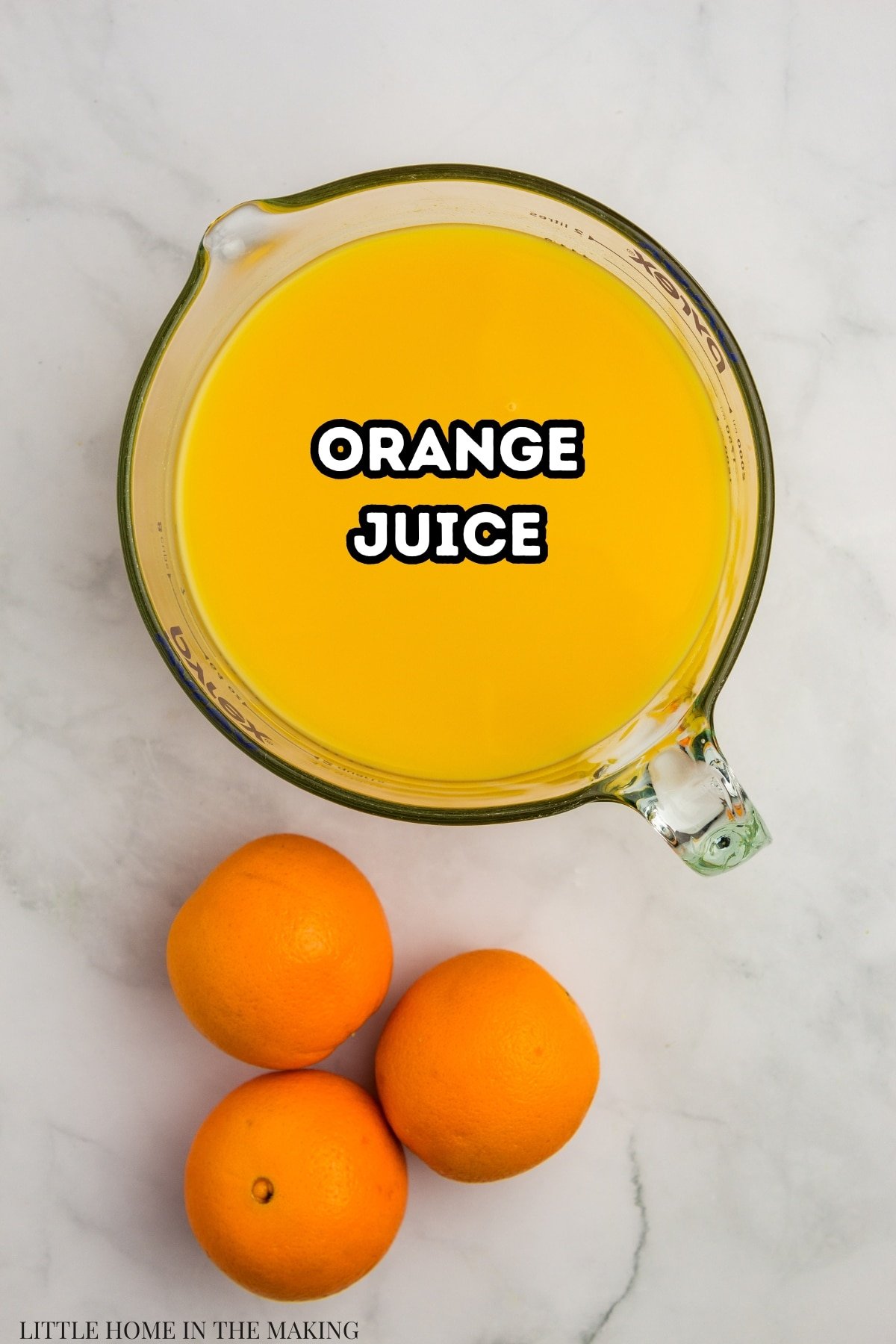
- Orange juice (or fresh oranges): Use juice you purchase from the grocery store, or make your own - it's totally up to you! To do a full canner load you will need 14-16 cups.
Be sure to check out my post about Canning Oranges if you have an excess of navel oranges, mandarin oranges, or other citrus fruits to preserve. They can be preserved in a sugar syrup, juice, or water.
Canning Equipment
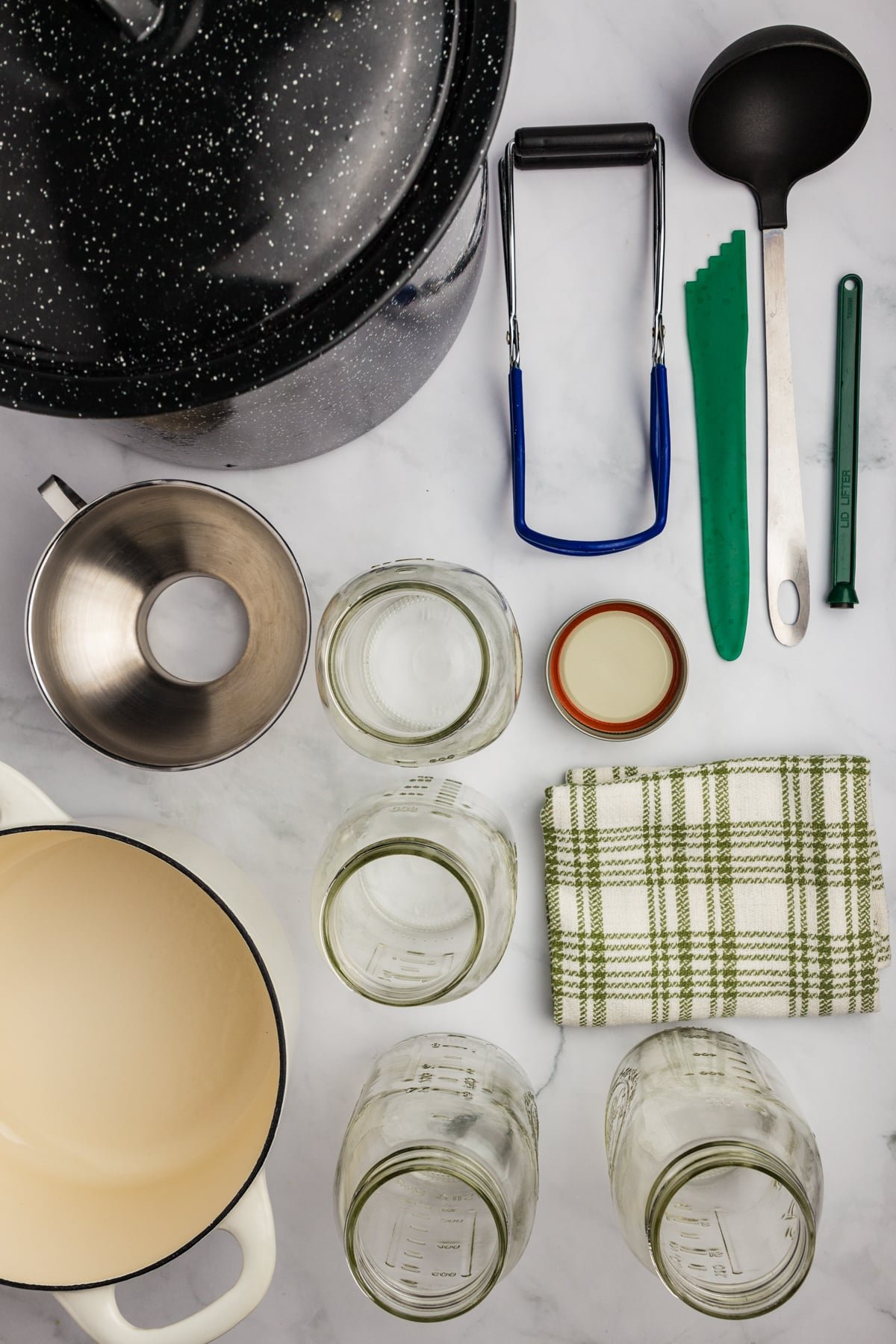
- Canning jars (and lids)
- Canning pot (AKA water bath canner)
- Wide mouth funnel
- Magnetic lid lifter
- De-bubbler
- Jar lifter
- Ladle
- Large pot (I like to use a Dutch oven)
- Clean kitchen towel
Before You Get Started: Canning Prep
- Wash all the jars, lids, rings, and canning equipment with hot, soapy water. Rinse well.
- Fill the water bath canner with water and bring to a boil.
- Add the canning jars to the boiling water and sterilize for at least 5 minutes.
- Turn the heat to low and allow the jars to rest in the hot water until you're ready to use them.
- Sterilize the rings (optional) in boiling water for 5. Then lower the heat and allow to rest in hot water until needed.
- Warm the canning lids in hot water (not boiling) until needed. I recommend adding them to the pot you used to sterilize the rings, only after the boiling time is up.
How to Water Bath Can Orange Juice
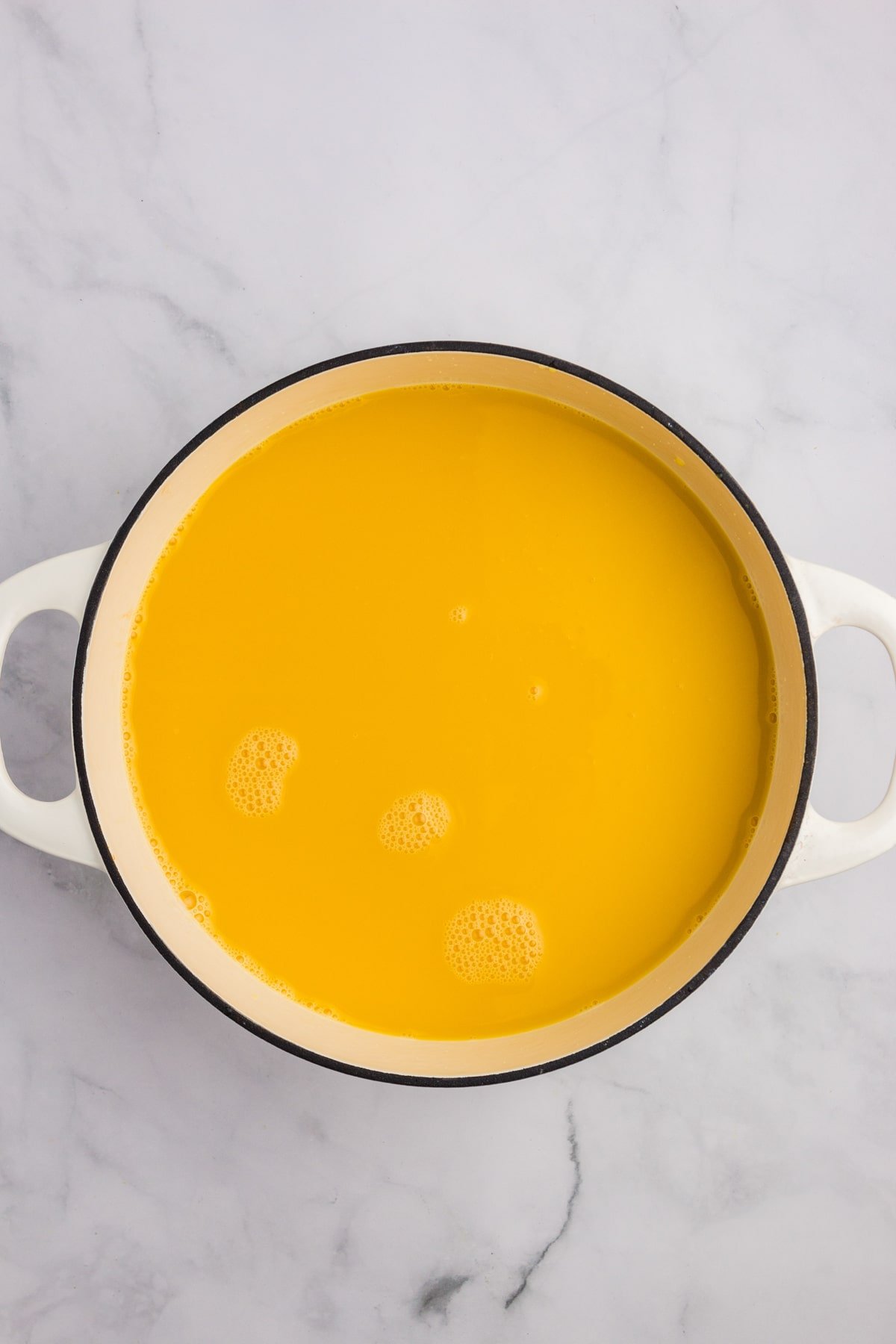
Step one: Add the orange juice to a large pot, and bring up to a temperature of 195ºF (91ºC).
Note: If using freshly squeezed, you should first hold the juice at 160-163ºF (70-73ºC) for 15 seconds to pasteurize it.
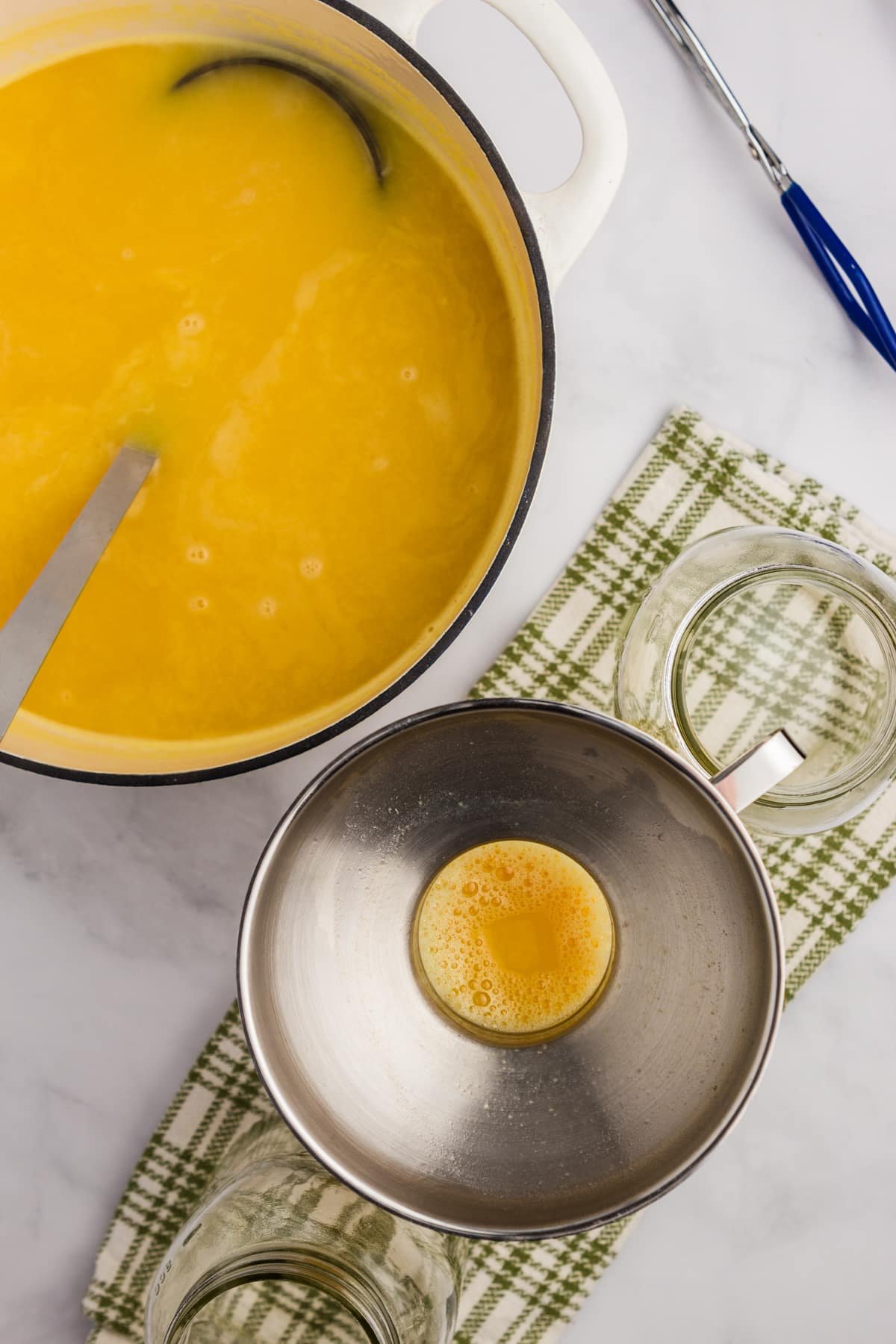
Step two: Ladle into hot jars, leaving ¼" headspace. Remove any air bubbles with a de-bubbler or clean butter knife.
Either pint jars (16oz/500ml) or quart jars (32oz/1L) can be used for this recipe.
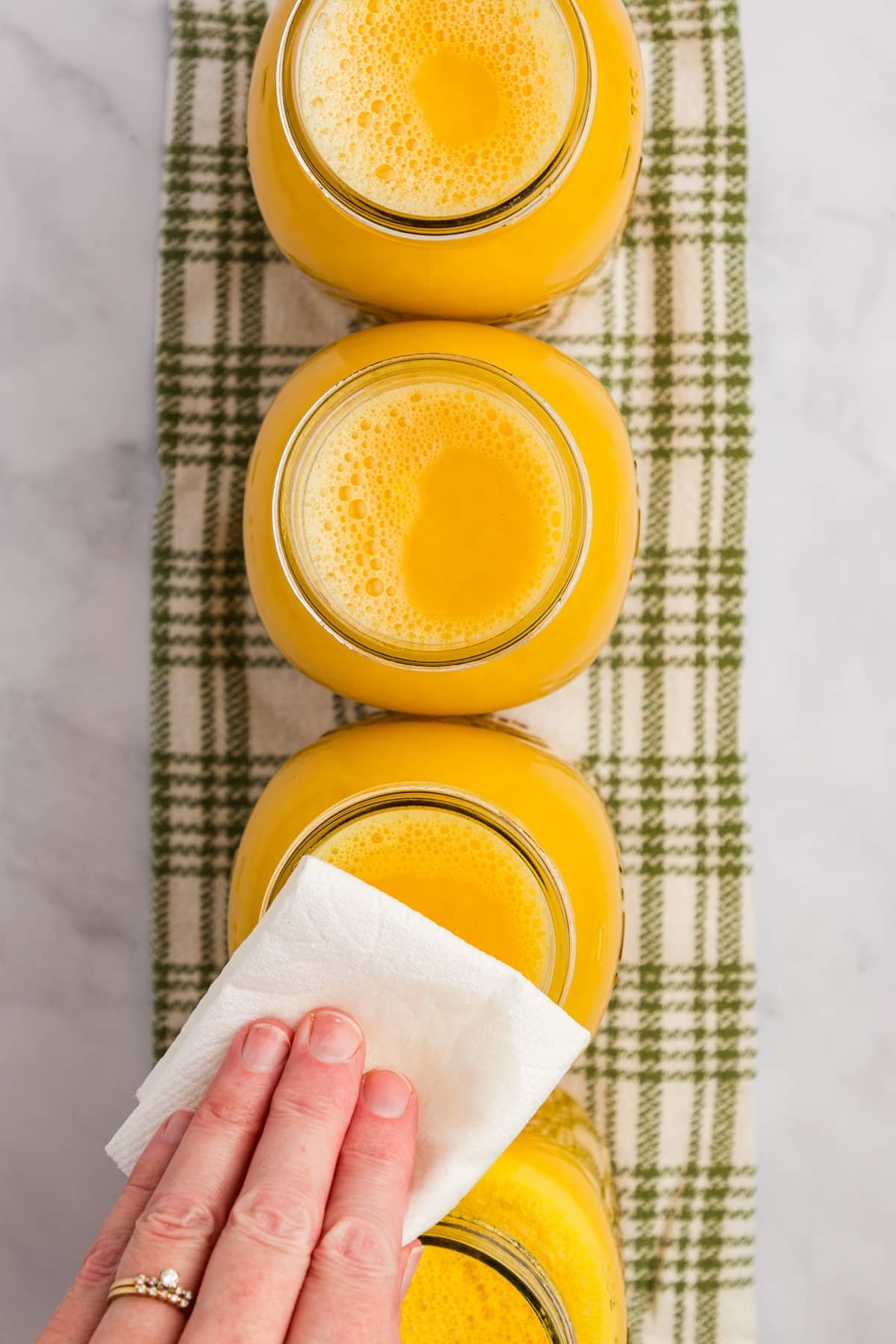
Step three: Wipe the rim of the jar with a dampened clean towel to remove any residue.
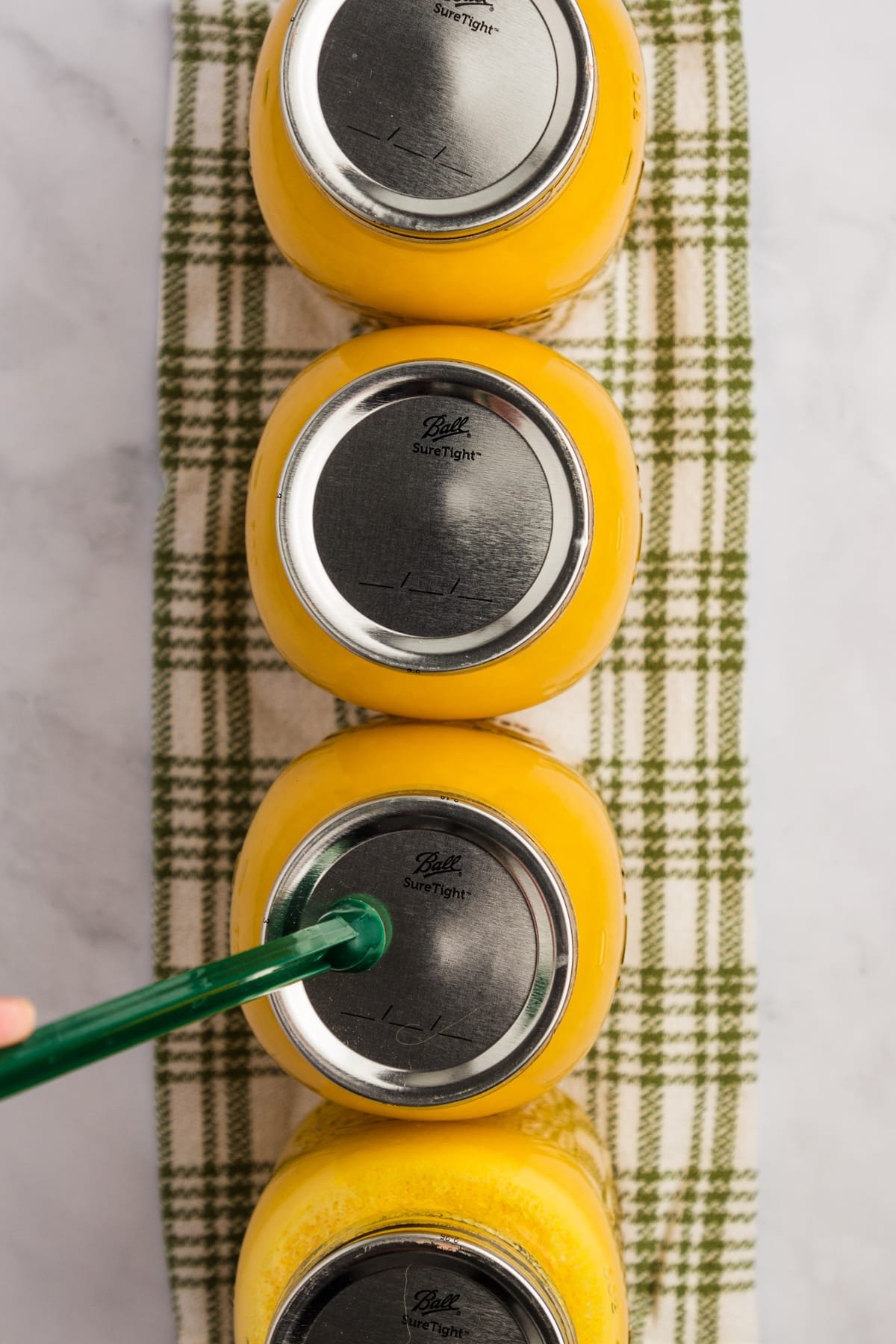
Step four: Place a warm lid on each jar, then place screw bands on them and secure until fingertip tight.
Wiping the Rims of the Jars
This is done to wipe away any debris, which can prevent the jar from sealing properly. Use a dampened clean kitchen towel or a damp paper towel.
Using vinegar instead of water is often done during pressure canning, but isn't needed for most water bath canning recipes.
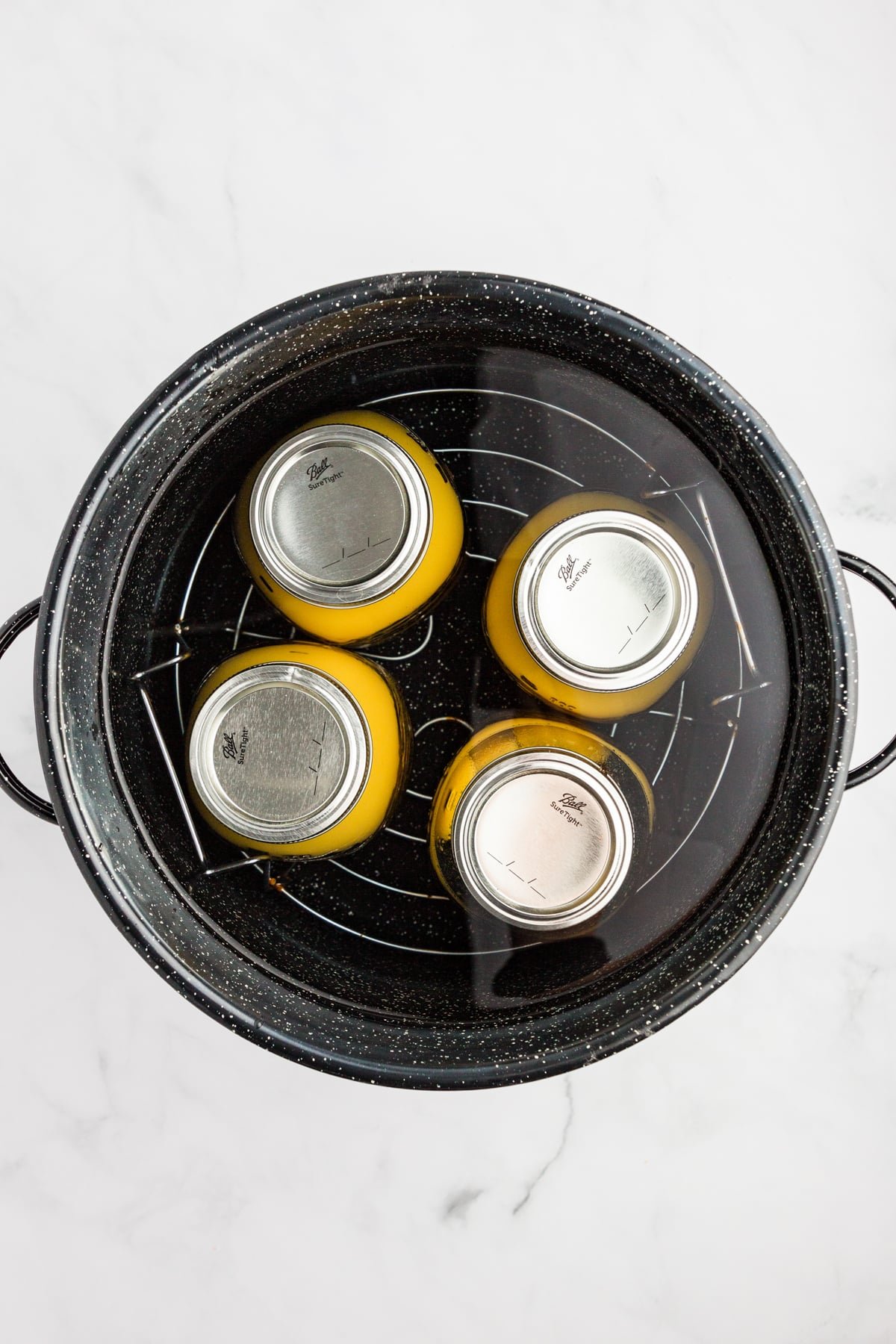
Step five: Place the filled jars in you canner filled with boiling water. Add a lid, and bring back up to a rolling boil.
Once the water returns to a boil, start the processing time. Both pins and quarts should be canned for 15 minutes.
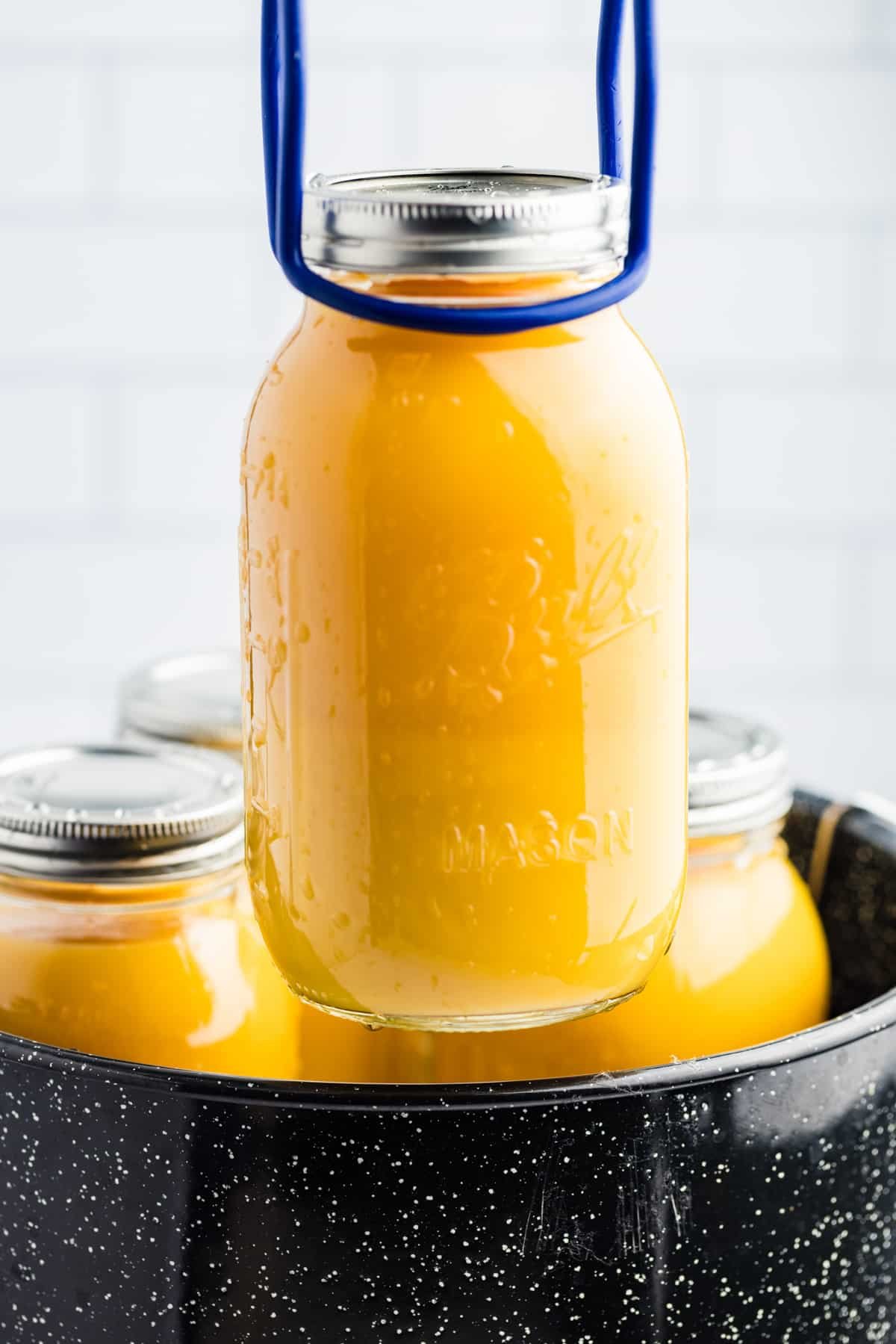
Step six: Once the processing time is up, turn off the heat and remove the lid.
Allow the jars to rest for 5 minutes in the canner before removing (this prevents temperature shock).
How Long Does it Take to Can Orange Juice?
Because orange juice is acidic, it can be canned in a boiling water bath, AND it is very quick to process.
- Pints: 15 minutes
- Quarts: 15 minutes
- High altitudes:
- 1,001 - 3,000 ft: 20 minutes
- 3,001 - 6,000 ft: 25 minutes
- 6,001 - 8,000 ft: 30 minutes
- 8,000+ ft: 35 minutes
Cooling and Checking the Seal
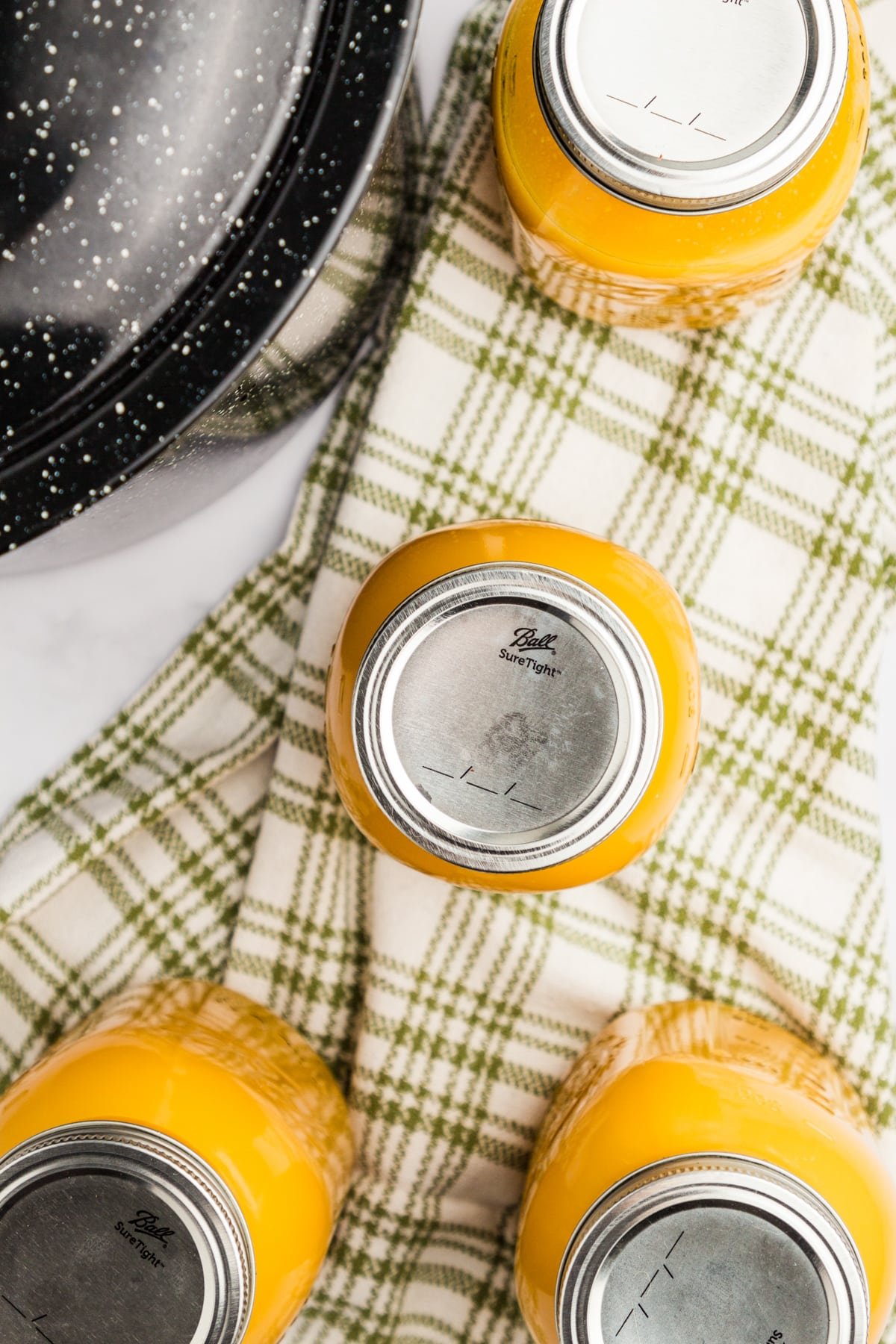
Step seven: Transfer the jars to a thick kitchen towel (or wire rack) and leave them undisturbed for 24 hours.
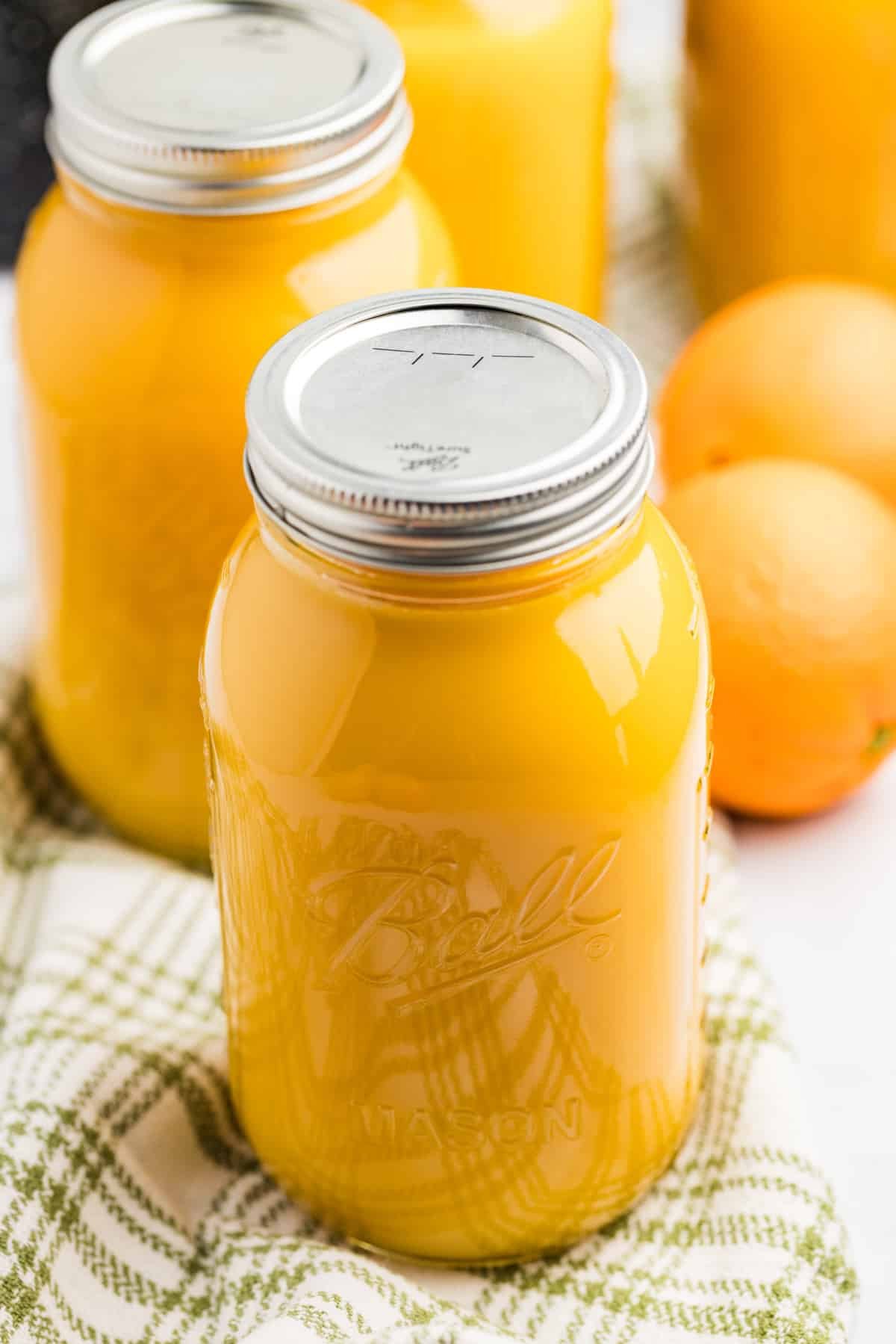
Step eight: As the jars seal you will hear a loud POP and the center will indent slightly. Most of the jars will seal in the first 1-2 hours, but some may take longer.
Tip: a good way to check for a proper seal is to remove the canning ring and lift the jar up by the metal lid.
What if the Jars don't seal?
- If any of your jars fail to seal, it may be for a variety of reasons (inadequate headspace, imperfections around the rim of the glass jar, imperfections in the lid seal, etc).
- It's very common to have a failed seal occasionally, so as long as the vast majority of your jars sealed you can be fairly sure you did everything correctly.
- Jars that did not seal do not need to go to waste. Transfer them to the fridge, where they can be stored for up to a week.
Freezing Canned Juice
For the best results, quality, and nutrition, extension agents recommend freezing the canned juice. This isn't necessary, but it does help to preserve the taste and color and is a great option if you have the freezer room.
Refrigeration or freezing extends the storage from 1 year, to up to 2 years.
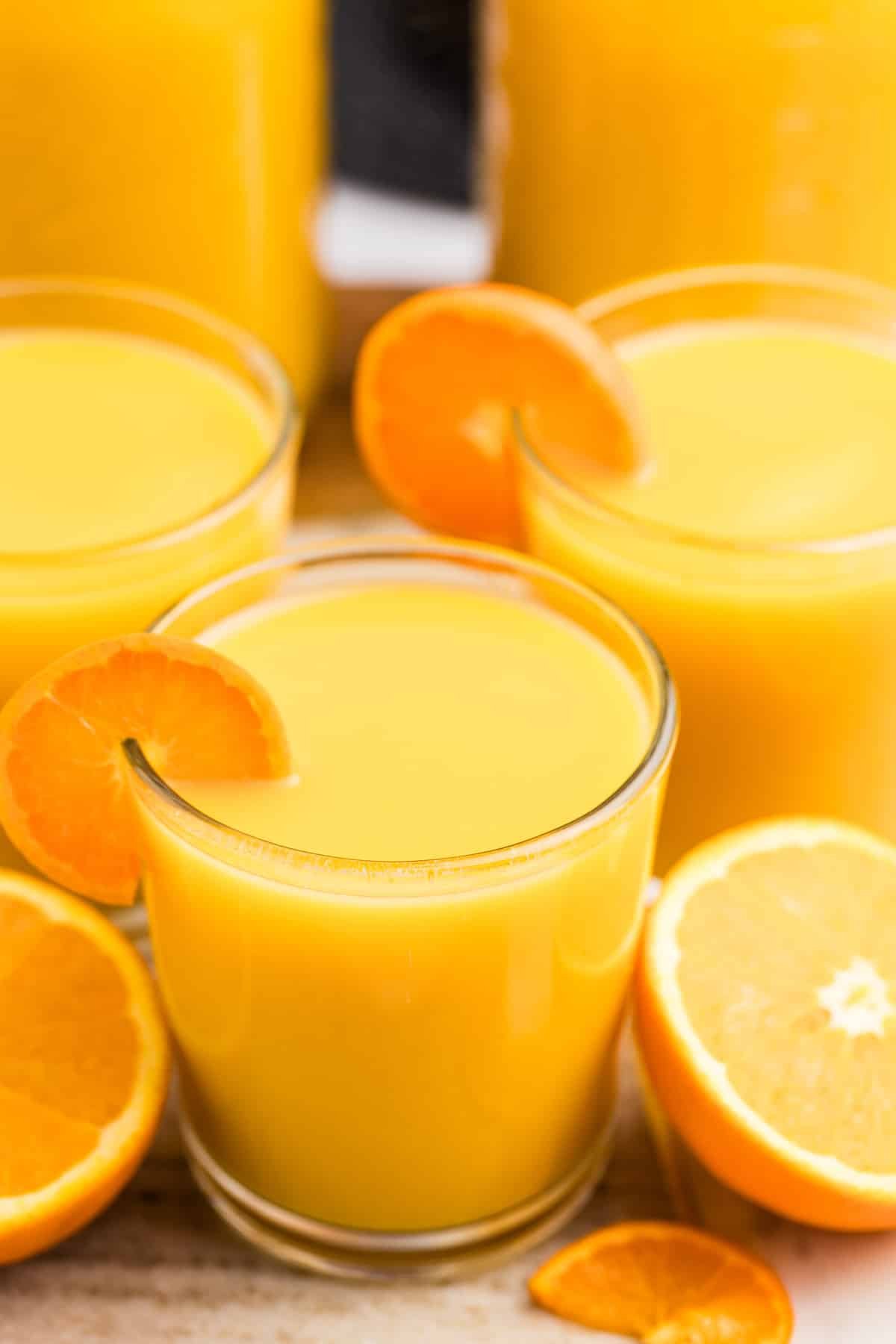
Freshly Squeezed vs. Store-Bought Juice
Both freshly-squeezed orange juice or bottled can be used for this recipe. If you're using juice that you make at home, it will need to be pasteurized first.
- Fresh juice should be pasteurized by holding it at a temperature of 160-163ºF (71-73ºC) for 15 seconds.
- To reduce the cloudiness of homemade juice, bring it to a temperature of 185-194ºF (85-90ºC) for 15 seconds. This deactivates Pectinesterase, which is the enzyme responsible.
- Once the desired heat is achieved AND held for 15 seconds, proceed with the canning instructions by bringing the juice to 195ºF (91ºC) and ladling the hot juice into jars.
- When preparing citrus juice at home, first remove the peel and the white pith before squeezing; the pith (AKA white stuff) has a bitter taste.
Top tip: If you made your own and you're looking for a way to use the leftover orange peels, try making a batch of orange vinegar. It's my all time favorite natural cleaning product!
Canning Grapefruit Juice
You can follow the same process for canning grapefruit juice as you do orange juice. Bring the juice up to 195ºF (91ºC), then add to hot pint or quart jars and process for 15 minutes in a boiling water canner.
or Lemon Juice
Follow the same instructions for pasteurization, boiling, then processing. Be sure to strain the lemon juice to remove the pulp before heating.
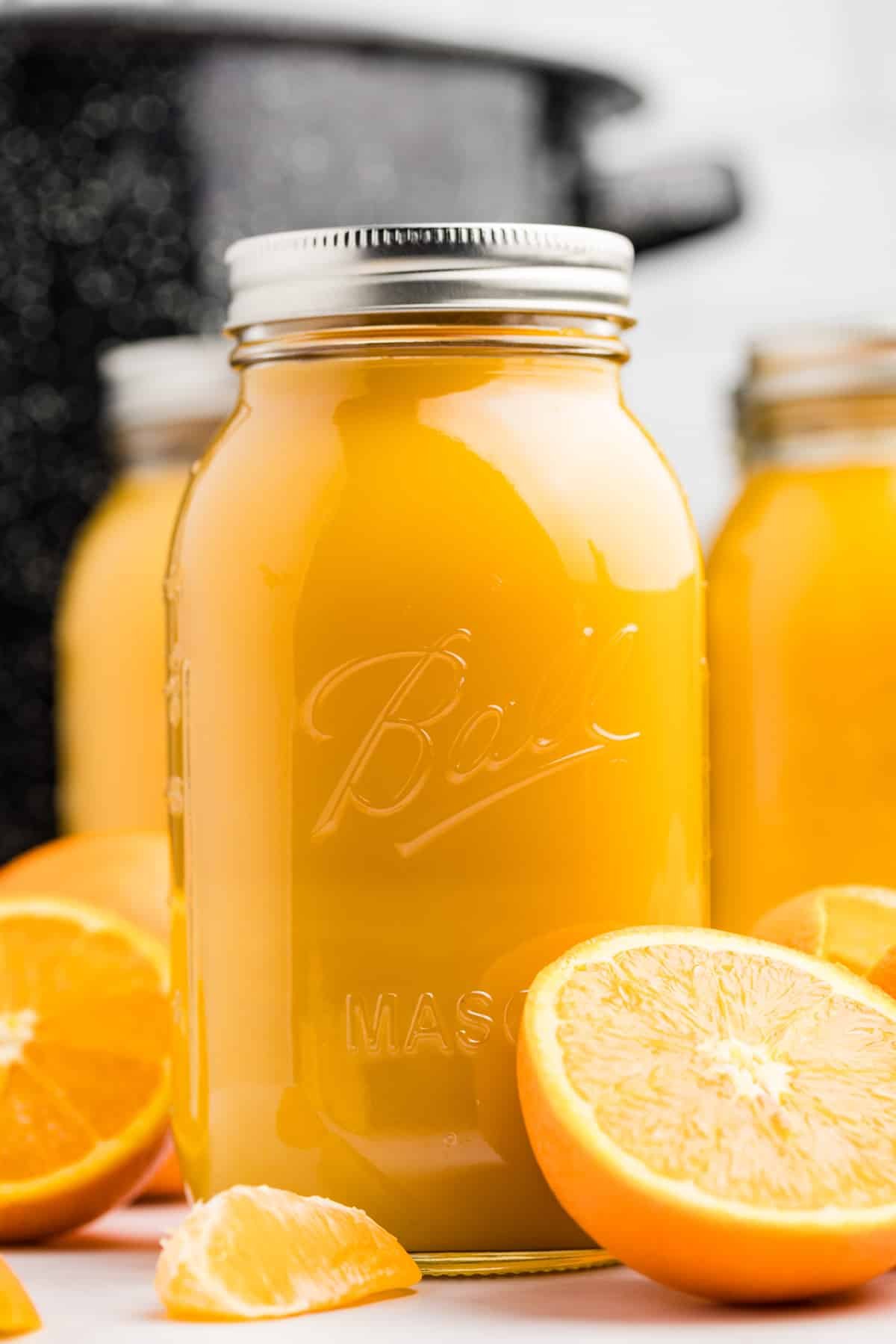
Storing Canned Food
- The USDA states that home canned food (with a true seal) is good for at least 1 year, while most jar manufacturers say the seal is good for at least 18 months.
- Canned citrus juice is good for up to 1 year; storing it in the refrigerator or freezer extends the storage to up to 2 years.
- If freezing, use a straight-sided mason jar like a wide mouth pint jar - these are the only types that are approved for freezing.
- Keep in a cool, dark place (like a basement) for the best results.
- Never store your home canned goods with the outer ring in place, and discard if the seal is compromised or there is any off smell or growth in the jar.
- ALWAYS inspect your canned foods for signs of spoilage and for a secure seal before consuming. Lift the jar up by the lid; if the lid falls off - discard immediately as the seal has been compromised.
Recipe FAQ's
Yes, fresh orange juice can be canned! Since it is a high acid food, it can be processed in pints or quarts for about 15 minutes. BUT you must first heat the juice (hot pack) before processing.
The best way to make shelf stable orange juice is to process it in a water bath canner. This will keep your juice good for up to 12 months in a cool, dark place (as long as the seal is intact).
Home canned orange juice will stay good a room temperature for up to 1 year as long as the jars remain sealed and in good condition. The canned jars can be frozen (or refrigerated) for better preservation, but it's not required. Refrigerated (or frozen) canned juice will last for 1-2 years.
If you loved this recipe for canning orange juice, let me know by leaving a 5-star review in the recipe card or comment below! You can also tag me on Instagram @littlehomeinthemaking.
📖 Recipe
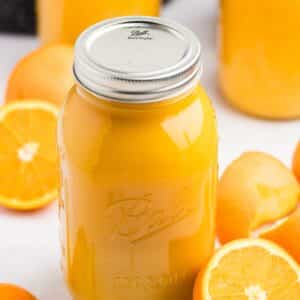
Canning Orange Juice
Equipment
- Canning jars (pints or quarts)
Ingredients
- 14-16 cups orange juice freshly squeezed* or store-bought
Instructions
- Wash all canning jars, lids, and equipment thoroughly with hot soapy water.
- Sterilize jars in boiling water (in the canner) for 5 minutes. Keep them in the boiling water until needed.
- Add the lids to a saucepan of barely simmering water to keep warm.
- Add the orange juice to a large pot and heat over medium heat, stirring often.
- Once a minimum temperature of 195ºF (91ºC) is reached, ladle into hot jars, leaving ¼” headspace.
- Wipe the jar rims with a clean towel or a vinegar-dampened clean cloth.
- Add a warm lid to each jar, then add a lid ring until fingertip tight.
- Transfer the prepared jars to the canner and add a lid. Bring to a boil over high heat.
- Once the water has returned to a rapid boil, start the time.
- Process for 15 minutes in the boiling water bath canner.
- Once the time is up, turn off the heat, remove the lid, and remove the canner from the heating element. Allow the jars to rest for 5 minutes in the water.
- Once the 5 minutes are up, remove the jars and place them in a location where they can go undisturbed for at least 24 hours.
- After 24 hours, check the seals and remove the canning rings. Wipe down the jars and label them. Any jars that have not been sealed should be moved to the fridge to be eaten right away.
- NOTE: For the best quality juice, freeze after canning**. This prevents separation, and helps to preserve flavor, color, and nutrition - but is optional.
Notes
- 1,001 - 3,000 ft: 20 minutes
- 3,001 - 6,000 ft: 25 minutes
- 6,001 - 8,000 ft: 30 minutes
- 8,000+ ft: 35 minutes
Nutrition
The majority of the canning recipes here at Little Home in the Making are adapted from tested recipes from the USDA, National Center for Home Food Preservation (NCHFP), and other trusted sources. Check the recipe card for listed sources and relevant links.
Please note that some of my blog posts here at Little Home in the Making may contain affiliate links. If you make a purchase through these links, I will get a small commission at no additional cost to you. See our disclaimer for more information.
Sources
- Orange juice: safe for canning? - OSU Extension Service
- Citrus juice (pdf) - University of Guam



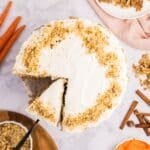
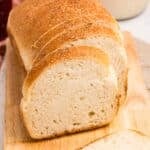
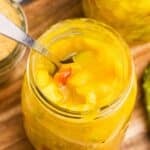
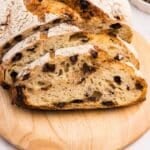


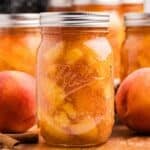
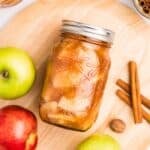
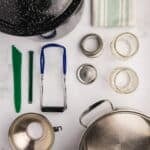

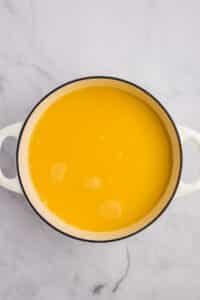
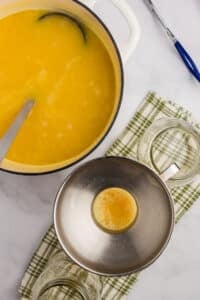
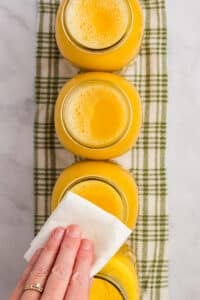
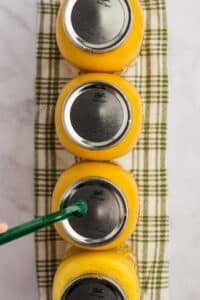

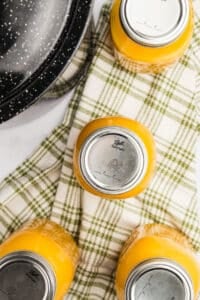
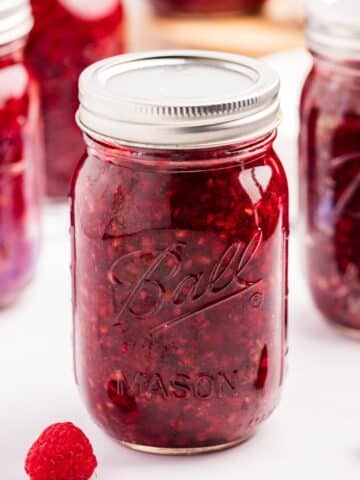
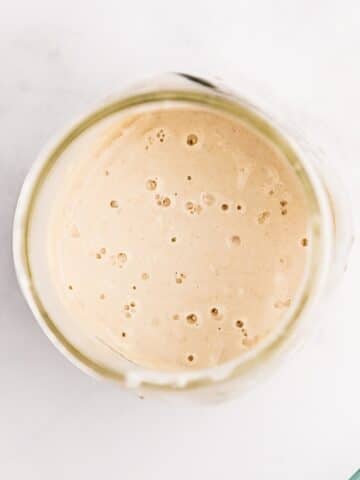
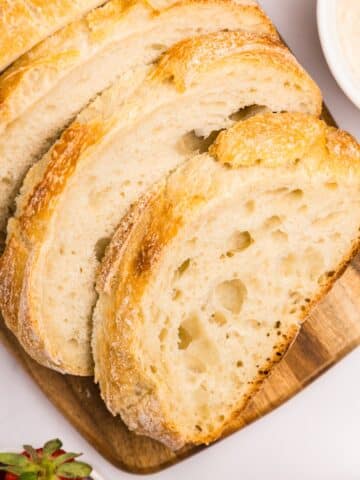
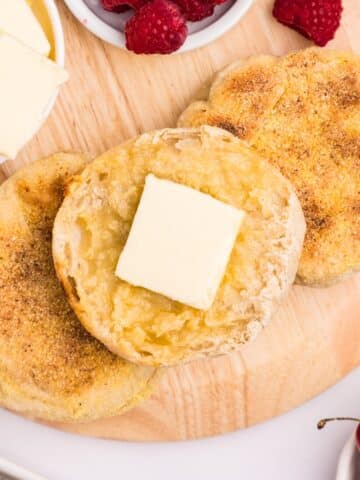
Leave a Reply